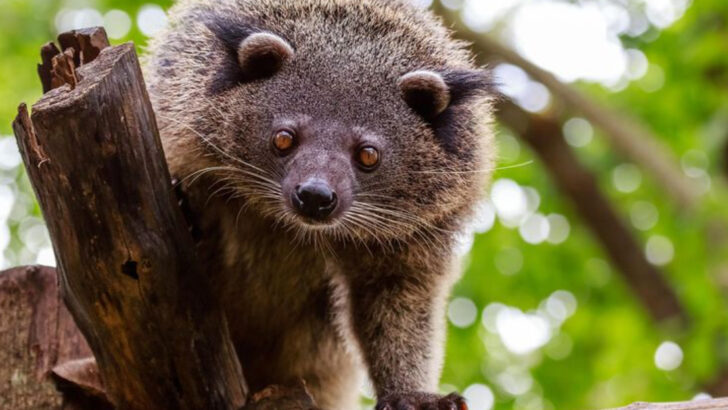The binturong isn’t just another furry face in the forest—it’s a true unsung hero. This mysterious creature plays a crucial role in keeping its ecosystem alive and thriving. With a diet that spreads seeds far and wide, the binturong quietly rebuilds the forest, one fruit at a time. Its nocturnal habits help balance the delicate dance of predator and prey, while its tree-swinging skills protect the canopy’s health. But don’t be fooled—this forest champion is also downright strange. From smelling like buttered popcorn to sporting a prehensile tail that acts like a fifth limb, the binturong is packed with surprises that make it utterly unique. Get ready to discover why this oddball creature deserves more respect—and how it quietly shapes the wild world around it.
Seed Disperser Extraordinaire
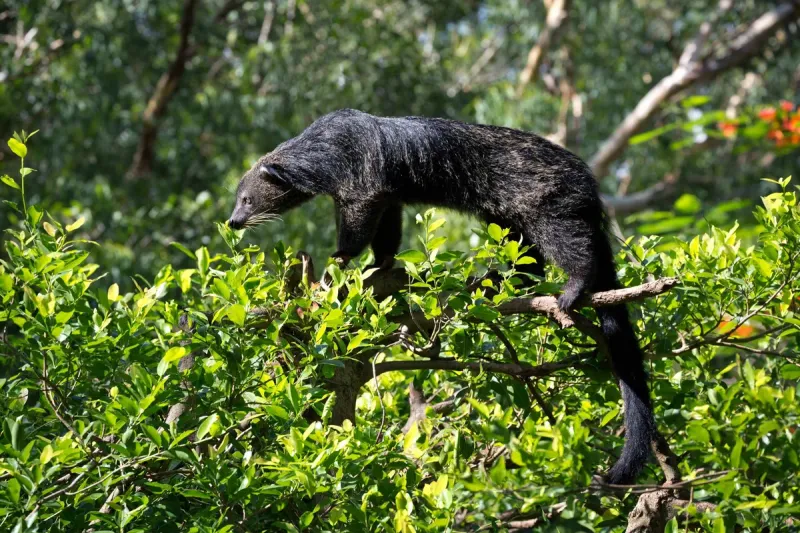
Picture a creature that plays a crucial role in forest regeneration. The binturong, with its love for fruits, spreads seeds far and wide, ensuring new growth. This seed dispersal supports various plant species, making the area thrive. Without this furry gardener, forests would struggle to regenerate as effectively. By feeding on fruits like figs, the binturong becomes a key player in maintaining biodiversity. It not only eats but helps in the natural cycle of growth. This unseen hero of the forest makes sure that life finds a way to flourish.
Nocturnal Forest Guardian
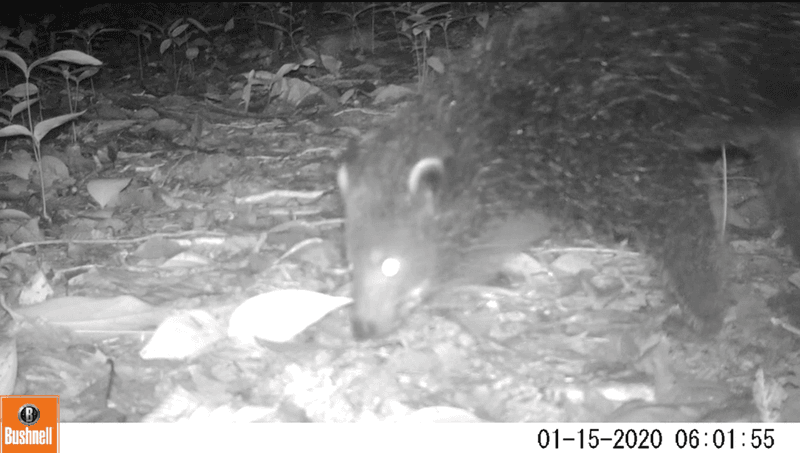
As the sun sets, the binturong comes alive, becoming a guardian of the night. Its nocturnal nature means it controls the population of small animals and insects, keeping the ecosystem balanced. By hunting these creatures, the binturong helps prevent overpopulation and the potential damage they may cause. This nighttime activity makes it a crucial player in forest health. In the quiet hours, when most animals rest, the binturong is hard at work maintaining harmony in its environment. A silent protector, it ensures the night remains peaceful.
Tree-Dwelling Helper
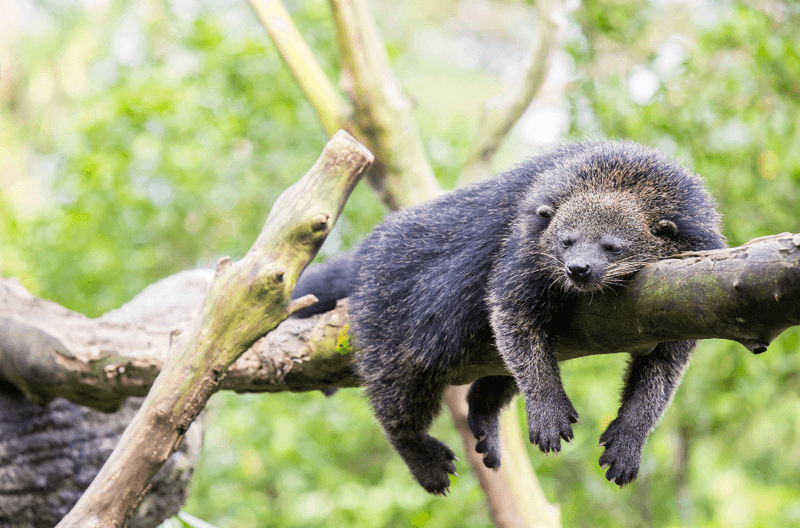
High above the ground, the binturong lives among the branches. Its arboreal lifestyle minimizes damage to ground plants and supports canopy diversity. By moving through the trees, it prevents overgrowth and ensures sunlight reaches different layers of the forest. This way of life also makes the binturong less intrusive to other ground-dwelling creatures. The binturong’s presence in the trees highlights its importance in preserving the delicate balance of the forest. A true helper among the treetops, it contributes to a healthy ecosystem from above.
Omnivorous Diet

With a palate for diversity, the binturong boasts an omnivorous diet that stabilizes the food web. From fruits to small animals, its diet reflects a balance that prevents overpopulation of any single species. By consuming various foods, the binturong ensures that resources are distributed evenly, benefiting the entire ecosystem. The binturong’s eating habits offer a glimpse into its adaptability and resilience. This varied diet not only sustains the binturong but enriches the environment, showcasing how diversity in diet leads to ecological stability.
Territory Markers
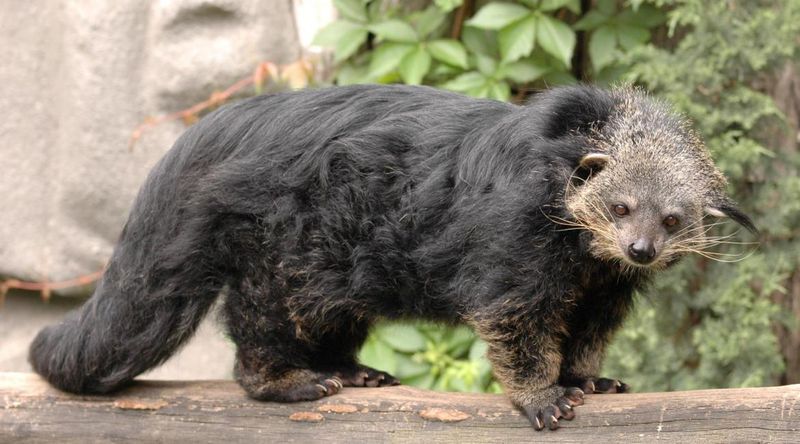
Have you ever thought about the importance of boundaries? For the binturong, scent-marking is a way to establish territories, helping maintain ecological balance. By marking boundaries, it keeps populations in check, ensuring no species dominates. This behavior is vital in preventing overcrowding and resource depletion. The binturong’s scent, reminiscent of buttered popcorn, is unique and serves as a communication tool. It’s fascinating how a simple act of marking can have such profound effects on the environment. Through these boundaries, harmony is preserved.
Pollinators by Accident

Sometimes, heroes don’t wear capes. The binturong, while moving through its habitat, inadvertently pollinates plants, aiding in their reproduction. This accidental pollination occurs as pollen sticks to its fur and is transferred between flowers. Though not a primary pollinator, the binturong’s contribution to plant reproduction is significant. Its mere presence in the forest supports biodiversity in subtle ways. This unintentional act has far-reaching effects, demonstrating that even unintended actions can have positive environmental impacts.
Slow Reproducers
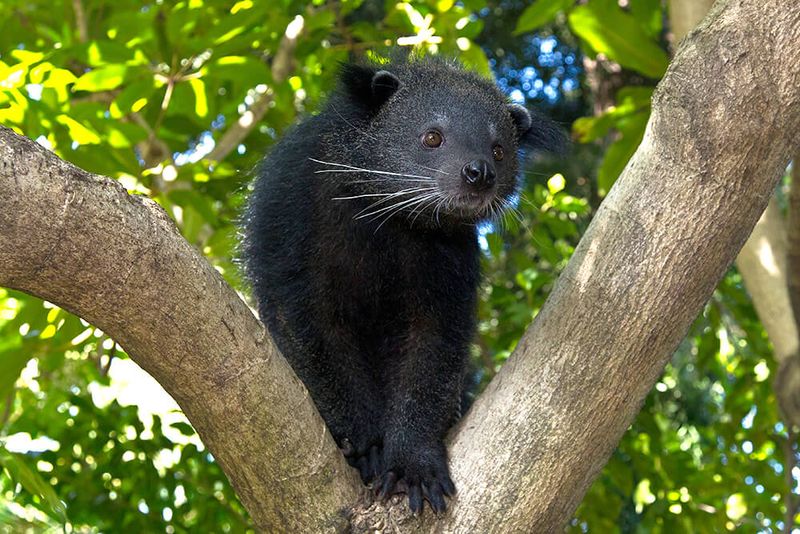
With patience and precision, the binturong reproduces slowly, a trait that encourages habitat preservation. This low reproductive rate ensures sustainable populations, as it doesn’t overwhelm the ecosystem. By having fewer offspring, the binturong reduces its impact on available resources, promoting balance. This careful approach to reproduction reflects its role as a responsible member of the forest community. It’s a reminder that sustainability is key to a thriving ecosystem. The binturong’s slow reproduction is part of its strategy for enduring survival in the wild.
Sensitive to Habitat Loss
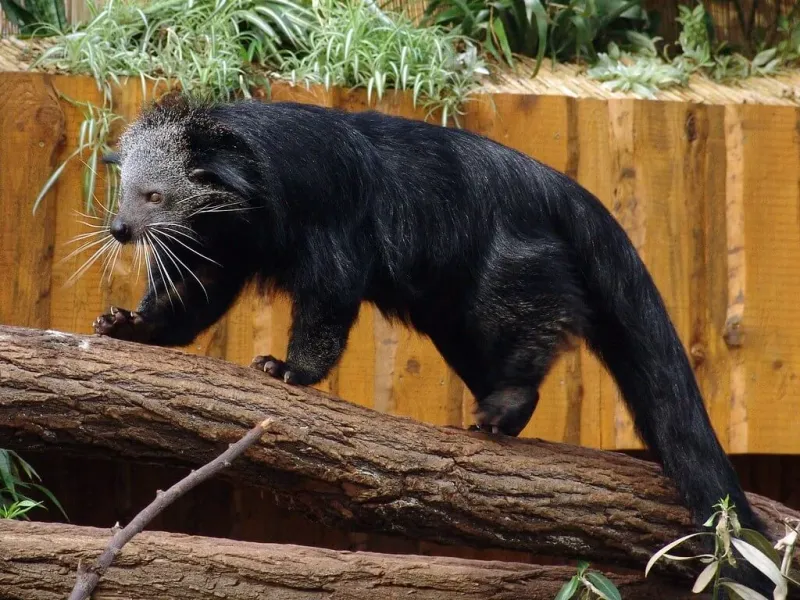
The binturong is a sensitive indicator of forest health, reacting visibly to habitat loss. Its presence signifies a thriving ecosystem, while its absence can signal environmental distress. As forests shrink, the binturong struggles, highlighting the urgent need for conservation. This sensitivity underscores the interconnectedness of species and their habitats. The binturong’s plight mirrors that of the forest, making it a symbol of ecological health. Protecting its habitat means preserving a piece of nature’s delicate balance. The binturong serves as a reminder of what’s at stake.
Symbiotic Relationships
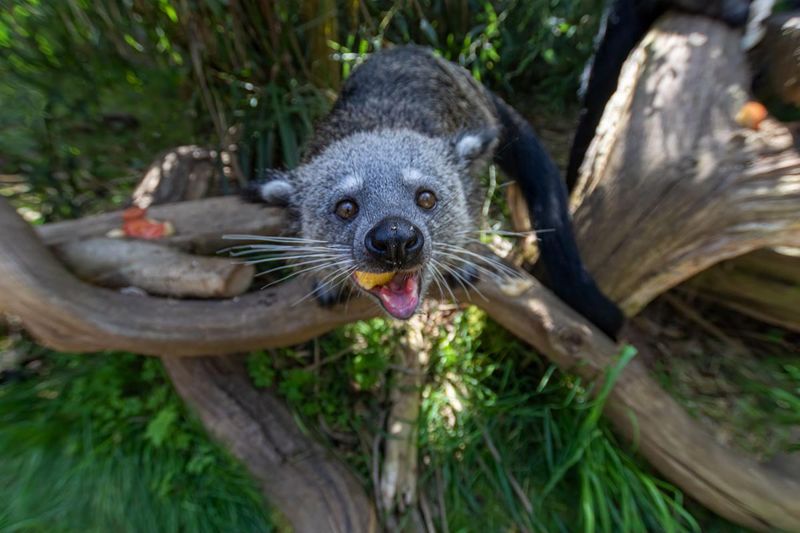
Imagine a creature that thrives through cooperation. The binturong engages in symbiotic relationships with many species, supporting biodiversity. By coexisting with various animals, it fosters a network of mutual benefits. These interactions enhance the resilience of the ecosystem, with each species playing a part. The binturong’s ability to form alliances demonstrates the power of collaboration in nature. It shows how interconnected life forms contribute to a balanced environment. This symbiosis is a lesson in harmony, emphasizing that cooperation can lead to thriving communities.
Forest Cleaners

Cleaning up the forest floor, the binturong consumes carrion and fallen fruit, preventing disease spread. Its role as a cleaner ensures that decay is kept in check, maintaining a healthier environment. By removing these potential hazards, the binturong contributes to the overall wellbeing of its habitat. This act of cleaning is vital for controlling disease and supporting a clean ecosystem. The binturong’s diligence in tidying up highlights its importance in forest maintenance. Its presence ensures that the forest remains a vibrant and healthy home for all its inhabitants.
Rare and Elusive
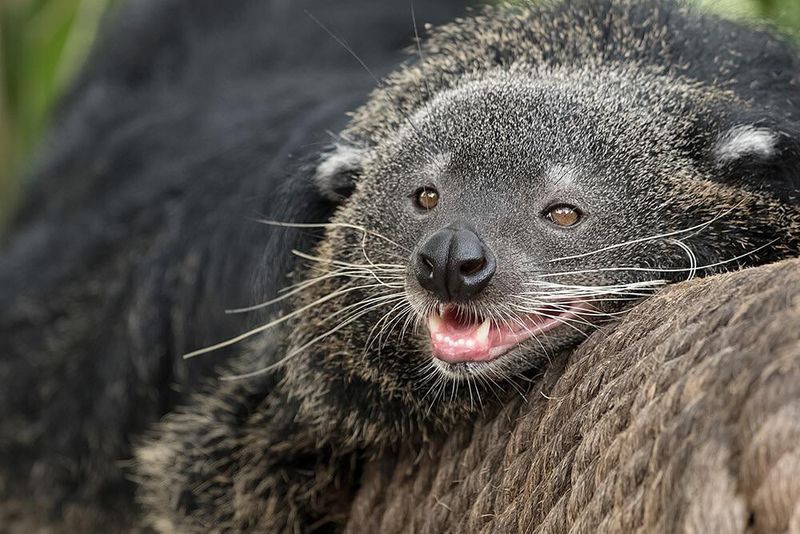
Elusive and rare, the binturong remains a creature of mystery. Its scarcity drives conservation efforts that benefit numerous other species. Protecting the binturong means safeguarding entire ecosystems, as its needs align with broader environmental health. This rarity adds a layer of intrigue, drawing researchers and conservationists alike. The binturong’s elusive nature reminds us of the fragility of the wild and the importance of preserving it. Its protection becomes symbolic of larger conservation goals, ensuring that the forest remains a sanctuary for diverse life.
Cultural Importance

In some cultures, the binturong holds a place of honor in local folklore, where it’s seen as a mystical creature. This cultural significance raises awareness and fosters a connection between people and nature. The stories and legends that feature the binturong highlight its unique traits and foster respect for the natural world. By appearing in folklore, the binturong becomes more than just an animal; it transforms into a symbol of cultural heritage. This connection enhances conservation efforts, as protecting the binturong means preserving a piece of cultural identity.
Smells Like Buttered Popcorn
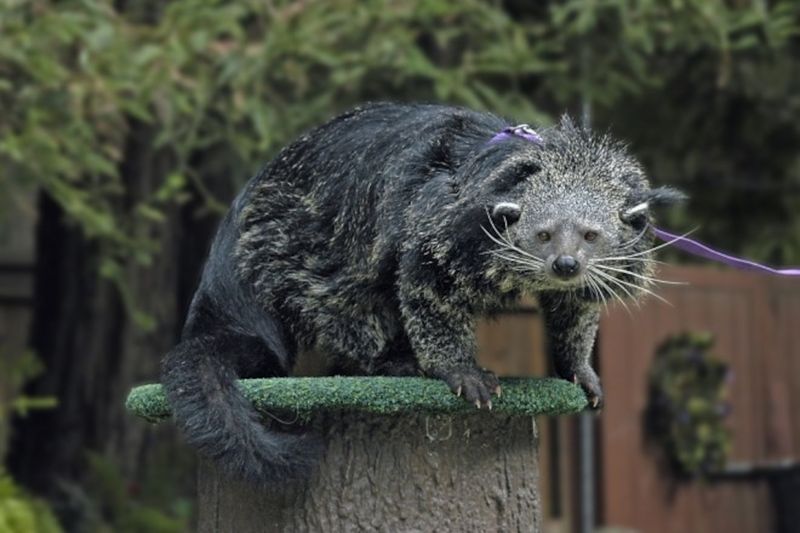
A scent not easily forgotten, the binturong is famously known for smelling like buttered popcorn. This unusual aroma comes from a gland located under its tail, intriguing anyone who encounters it. The scent serves as a unique identifier and plays a role in communication among binturongs. It’s an odd but endearing characteristic that sets the binturong apart from other animals. This popcorn-like scent has captured the curiosity of both scientists and nature lovers. It adds a quirky element to the binturong’s mysterious persona, making it a subject of fascination.
Prehensile Tail
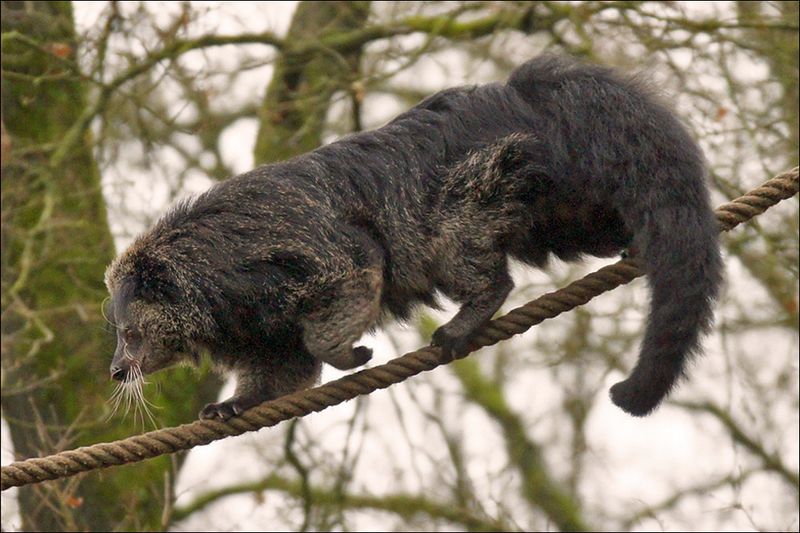
With agility and grace, the binturong navigates the treetops using its prehensile tail. Acting almost like a fifth limb, this tail allows it to grasp branches and move effortlessly through the canopy. This remarkable adaptation is a testament to the binturong’s arboreal evolution. The tail provides stability and support, essential for life among the trees. Its prehensile nature showcases the binturong’s adaptability and skill in its habitat. This feature not only aids in climbing but also adds to the binturong’s unique charm, making it a marvel of nature’s design.
Cat and Bear Mix Appearance
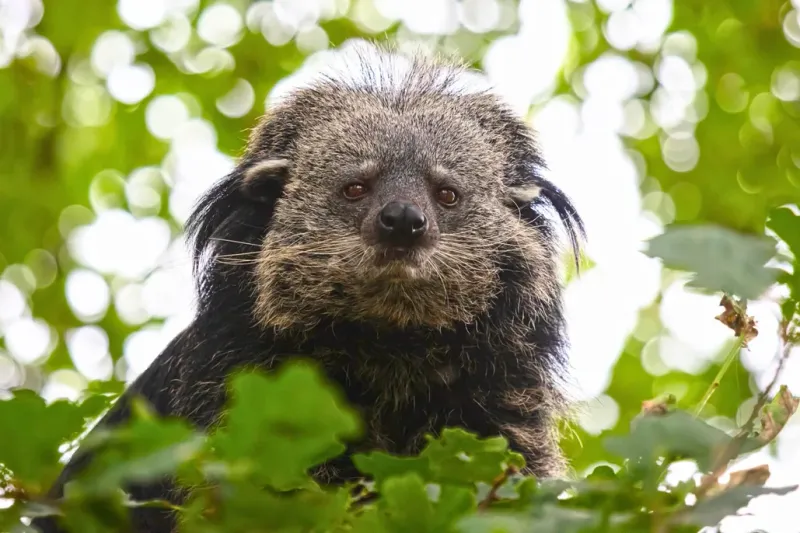
An animal that defies classification, the binturong looks like a blend of a cat and a bear. This unusual appearance often confuses those who encounter it, adding to its mystique. Its bushy tail and robust body contrast with its feline-like face, creating a unique visual identity. This strange combination makes the binturong stand out among forest creatures. Its appearance is not only a conversation starter but also a reminder of nature’s creativity. The binturong’s distinctive look captivates attention, making it a beloved oddity in the animal kingdom.
Noisy Communicators
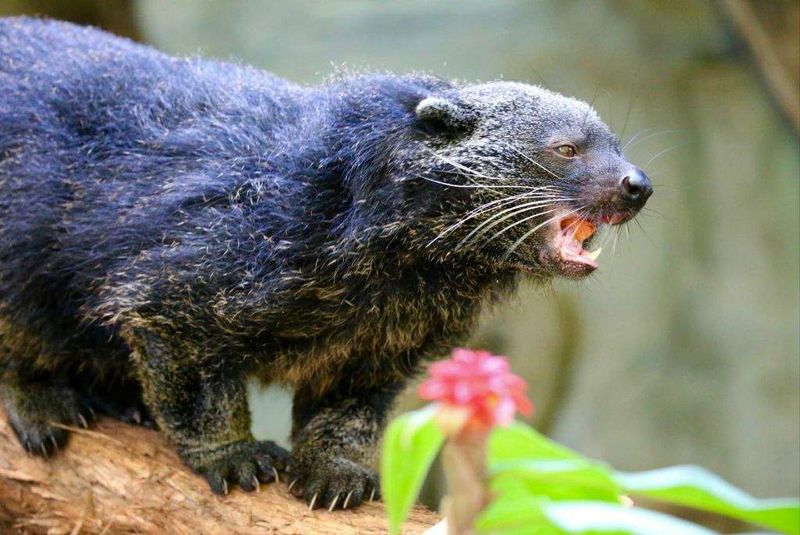
In the symphony of the forest, the binturong adds its own unique sounds. Known for its noisy communication, it produces a range of vocalizations from hisses to growls. These sounds help it express emotions and interact with others, showcasing its social nature. The binturong’s vocal repertoire adds to its intrigue, revealing a complex personality. This noisy communication is essential for maintaining bonds and establishing territories. It highlights the binturong’s vibrant character and enriches the sonic landscape of its habitat, making it an auditory highlight of the forest.

